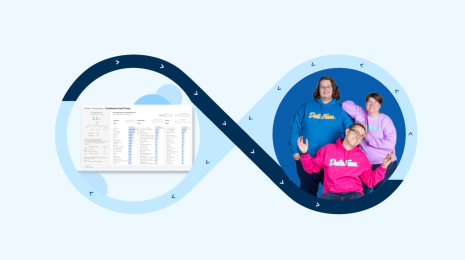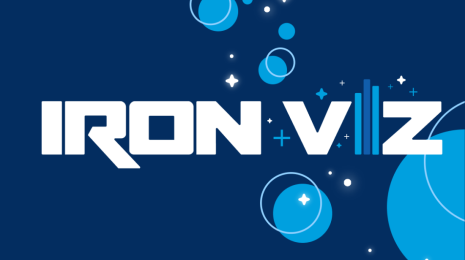3 tips for the non-traditional Tableau analyst
Note: The following is a guest post by Tableau Zen Master Bridget Winds Cogley.
I didn’t start my career in anything remotely close to this field. No, I went into American Sign Language interpreting and spent a good bit of time with a startup. Somehow, I ended up here. (“Here” is lost in the woods somewhere. There are trees and they’re lovely. And maybe a fire. And probably hot chocolate. With ice cream. IN the hot chocolate, because that’s how we do it in Cbus.)
If you’re an oddball like me, this is what I wished I’d heard earlier (and likely did – sorry!):
1. You belong
Take that in for a second. I’m sure you look around at job descriptions or get asked all kinds of questions that feel over your head. I know I did.
And you know what I did? I explained my approach. Yes, it’s different. No, it’s not “standard,” or the most common path. But it gave me a different way to look at things. Problems that seemed complex to others were often ones that my profession (interpreting) had already solved.
When I look at how I analyze data, I realize I use a number of interpreting processes to help support storytelling in data. I take practices from interpreting and apply them to dashboards. I did a lot of pattern detection with language, recognizing accents, educational backgrounds, and anything else that would help be deliver a better interpretation to that person.
Guess what? It works well with data. Own it, be prepared to explain it, but don’t hide it.
Learn the new profession, but don’t forget what you have.
2. You’re not behind
I was late to the game with computers. By the time I realized what they were, they’d gone beyond DOS to several generations of software upgrades. And this was before an upgrade came out every year. I was still rocking a blue briefcase typewriter.
When you come in later, you miss some of the evolution. You learn a little more at once, sort of like taking an honors class versus a regular one.
But here’s the beauty: At some point, you hit that point. It makes sense. And when a new update comes out, you and everyone else start over learning.
Sometimes you come in at a sweet spot, when a massive change has happened and you don’t have to unlearn bad habits, like with the Analytics pane (I will find this and use it someday, instead of right-clicking). Unlearning is harder than learning. Just look at how much farther ahead you started.
If we’re going to the same destination, we all get to the party at some point. Or at least, we find a rocking set of trees. And maybe the Analytics pane…
3. You have something to add
You learned something else before this. Maybe it was medical. Or writing. Or design. Or cooking (I got a spot for you to practice that, so you don’t lose that skill. I’d hate for you to forget how to cook. I got you).
Interdisciplinary approaches are all the rage. You’re fashionable without even knowing it. Don’t hide your cool factor; embrace it. When I started this blog, I wondered what the EX**L I’d cover someone else didn’t (still wonder, but that’s a different point). Sometimes it’s the lens you bring to the table that helps someone else see with greater clarity.
Some people dye their hair blue. You can just be you and still rock it. Or do both, because, why not?
PS You can help
Brit Cava is trying to understand this field. She has a survey. Everyone loves surveys. I’m greedy and just want free data (and maybe to prove a point that we’re NOT so odd or rare after all). Please help me skew populate this data.
For more tips, tricks, and vizzes by Bridget, check out her Tableau Public profile page and her blog. You can also connect with her on Twitter @WindsCogley.








